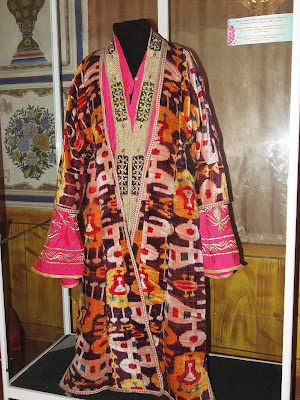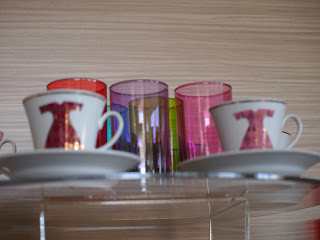Kutahya Porcelain
Kutahya is a town situated in the Central Anatolian region of Turkey.It is one of the 2 famous "Porcelain Cities" in Turkey, the other being Iznik.While Iznik is mainly known for colorful tiles, the porcelain of Kutahya is mainly see for china & jewelry.The motives used vary from old Seljuk patterns to Ottoman tulips to modern designs.
Factories on the outskirts produce commercial dinner plates and tea mugs, but the prestigious porcelain designs that defined Ottoman artistry are being revived in specialized local workshops.
The Kutahya Porcelain Factory is the largest and has started production since 1970. They have a mini museum within the complex besides the gallery and shopping arcade for visitors.
 |
| Museum Collections of the Kutahya Porcelain Manufacturer |
 |
| Museum Collection |
 |
| Museum Collection |
In 1766, the first collective agreement in the world that aimed to set a common value for products was signed . Till now the porcelain manufactures in Kutahya have followed the foot steps of their ancestors. All porcelain & ceramic producers in Kutahya will work in cooperation and nobody will sell their products under the pre determined prices.
 |
| Some of the modern designs |
They have professional staffs working there and some can speak French, Spanish, English to service the many visitors that come to the factory daily. Prices are reasonable and you can get a simple tea /coffee set from as low as USD 20 .
Besides the factory , Kutahya city itself has many historical attractions. There is a Tile Museum that opens from Tuesday to Sunday with outstanding 14th century porcelain items. It has a beautiful mosque on Gediz Street and adjacent to it a small Archaelogical Museum.
Kutahya was conquered by the Seljuks in 1071 and then conquered by the Crusaders in 1095 . Reconquered by the Seljuks in 1182.
The great Timurlane of Central Asia took and plundered Kutahya in 1402 and Kutahya became part of the Ottoman Empire later in 1428.
The old neighborhoods are dominated by Ottoman wooden houses made of mud & stucco. Personally for me the highlight was the tour passing through these old houses and the panoramic view from the top of the hill. Its a pity may visitors bypass this town going for the more commercialized attractions .
 |
| Beautiful interiors of the Kutahya Camii |
Join me in Turkey in March & June 2013
ASk Pipah mana mana!





















































